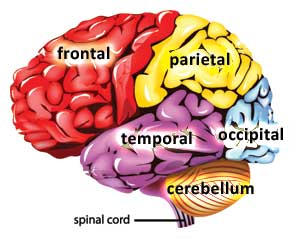The ability to communicate is our most human characteristic. Speech, hearing and understanding are essential life skills. An estimated 1 in 10 Canadians has a speech, language or hearing problem. Hearing loss is the third most prevalent chronic condition among older adults, with more than half of Canadians over age 65 having some hearing loss. In addition, 6 – 12% of seniors experience speech, language or voice fluency problems.
 Certain chronic conditions are known to affect communication. These include:
Certain chronic conditions are known to affect communication. These include:
- Stroke
- Traumatic Brain Injury
- Cerebral Palsy (CP)
- Amyotrophic Lateral Sclerosis (ALS or Lou Gehrig’s Disease)
- Multiple Sclerosis (MS)
- Muscular Dystrophy (MD)
- Brain Tumor
- Parkinson’s Disease
- Alzheimer’s Disease
In addition, communication challenges can result from infection, alcohol or drug abuse, surgery, medication, and a number of other less common medical conditions. Although the causes may vary widely, their effects on communication overlap and are treated similarly.
Language is the symbolic representation of our thoughts in words and sentences. Professionals often divide the use of language into two parts:
- Expressive language – communicating with others by speaking or writing
- Receptive language – understanding what we hear or read
 Both aspects of communication are strongly affected by what
happens in various parts of the brain. The left side of the brain is more actively involved in communication than the right side. The language we hear is interpreted mainly in the upper part of the brain’s temporal lobe. Visual images associated with
the words are accessed through pathways from the temporal lobe toward the occipital lobe, which interprets what we see. Thinking is mainly associated with the frontal lobe. Speech production is controlled largely in an area just in front of the parietal
lobe; this is where muscles are told to move. To produce speech, breath from the lungs must be pushed through the vocal chords and shaped into sounds in the mouth.
Both aspects of communication are strongly affected by what
happens in various parts of the brain. The left side of the brain is more actively involved in communication than the right side. The language we hear is interpreted mainly in the upper part of the brain’s temporal lobe. Visual images associated with
the words are accessed through pathways from the temporal lobe toward the occipital lobe, which interprets what we see. Thinking is mainly associated with the frontal lobe. Speech production is controlled largely in an area just in front of the parietal
lobe; this is where muscles are told to move. To produce speech, breath from the lungs must be pushed through the vocal chords and shaped into sounds in the mouth.
Communication requires coordinated effort within the brain. Damage to the brain as a result of injury, stroke or disease can interrupt communication processes. The good news is that sometimes the undamaged parts of the brain can be used to circumvent the damaged areas to restore some level of functional communication.
Communication impairments in chronic conditions result in an inability to easily:
- Express basic wants and needs
- Give information or share thoughts
- Practise social etiquette (e.g., greetings, politeness)
- Convey social closeness in relationships verbally
When communication is disrupted - whether through deafness or brain dysfunction - the individual risks becoming isolated.